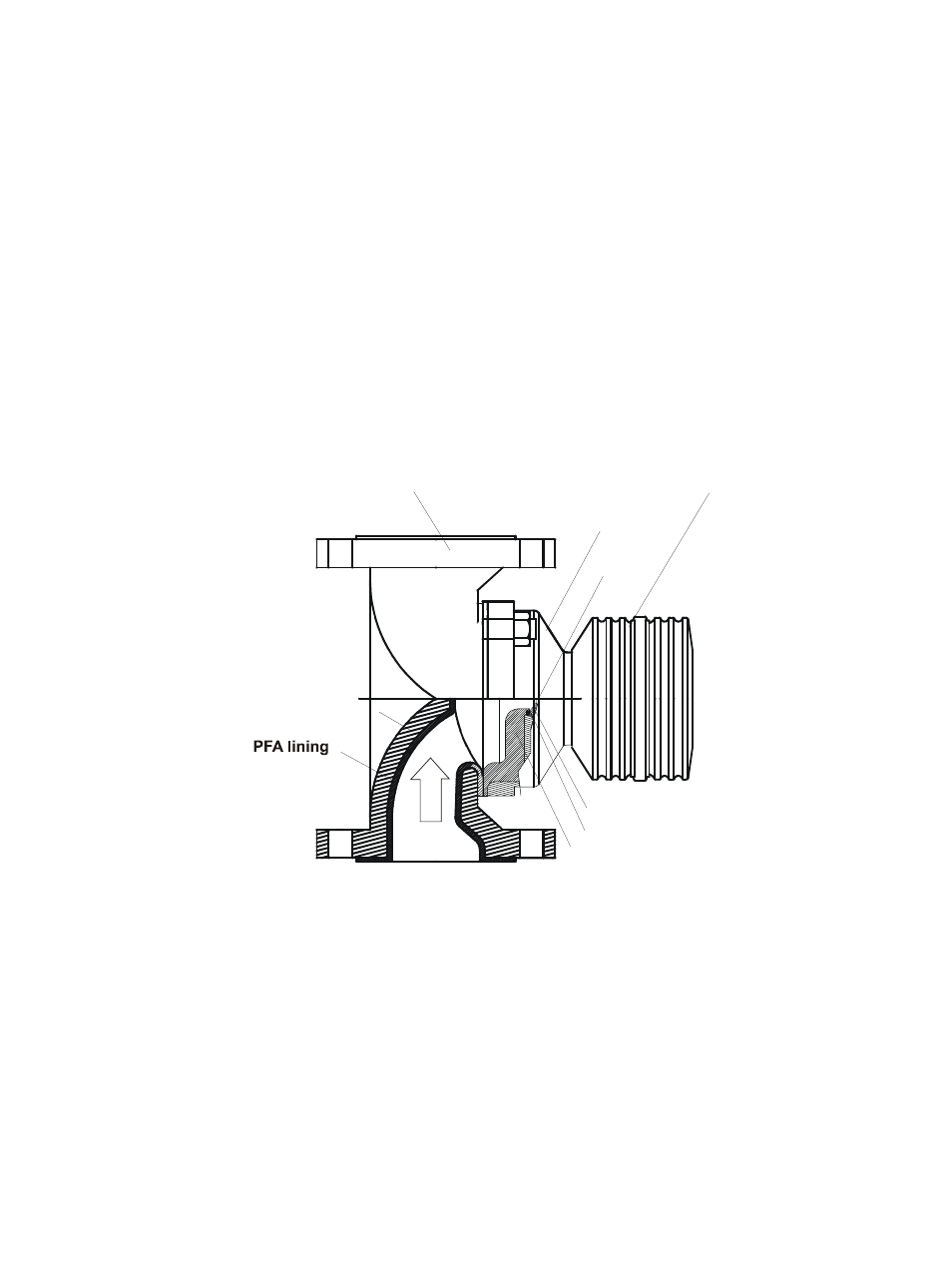9 saunders body refractometer pr-23-w – K-Patents PR-23 User Manual
Page 129

9 Sensor specifications
121
9.9 Saunders body refractometer PR-23-W
The Saunders body refractometer PR-23-W is a heavy-duty instrument designed for
chemically aggressive liquids and ultra-pure fine chemicals in large-scale production
and in large pipelines. The materials and design of the sensor are similar to the Teflon
body refractometer PR-23-M, but the Saunders body makes it possible to fit this re-
fractometer into 50, 80 or 100 mm (2", 3" or 4") pipelines.
The Saunders body material is graphite cast iron lined with 3 mm PFA (Fluorinated
ethylene propylene) fluoroplastic. The cast iron provides a solid mechanical base and
the PFA lining ensures the chemical resistance.
The sensor itself is built just like the PR-23-M sensor (see Section 9.8) and it is fixed to
the Saunders body in the same way, with a sapphire plate and a Kalrez O-ring to keep
all the metallic parts away from the process liquid.
3
Figure 3. Process Refractometer PR-03-W sensor and Saunders body valve flow cell (3” pipe): Dimensions.
TECHNICAL DESCRIPTION
The K-Patents Process Refractometer PR-03-W is
delivered with a Saunders valve body flow cell. The
flow cell can be mounted either in a vertical or
horizontal pipe.
The valve body material is graphite cast iron lined
with 3mm PFA (Fluorinated ethylene propylene)
fluoroplastic. The Cast iron provides a solid
mechanical base and the PFA-lining ensures the
chemical resistance.
The sensor wetted parts materials are Spinel or
sapphire (prism), PTFE or PELD (prism gasket),
sapphire plate, PVDF or PTFE®Teflon and PFA
(flow cell lining material). The K-Patents PR-03-W
has a stainless steel sensor cover.
The measurement surface, the prism, is flush
mounted into the surface of the sensor probe tip.
The prism is integral part of the CORE-optics
(Compact Optical Rigid Element) module, which is
springloaded against the prism gasket. A sapphire
plate has conical sealing surface against the
CORE-optics and it lies on the stainless steel
sensor head.
The flow cell is sealed with a Kalrez O-ring. The
light source is a light emitting diode (LED). The
digital image detecting sensor is a CCD-camera,
which consists of 1024 photocells.
The CCD-camera is protected from the process
heat by two isolation parts. Excess heat is
transferred with a heat conductor to the sensor
cover, which is air cooled (air cooling fins).
For automatic temperature compensation, the sensor
tip contains a Pt-100 process temperature probe. The
response time is very fast (
τ(
1
/
2
) = 6 s), which is
necessary for a real-time concentration
measurement. The microprocessor system
linearizes the concentration reading, and performs
automatic temperature compensation. Exact
precision is achieved due to the fact that the
compensation is calculated mathematically and not
using a conversion table.
The measurement is completely digital, as a serial
signal is used to send the raw measurement data
(optical image data and temperature) from the
sensor to the Indicating Transmitter. The
microprocessor system displays the optical image
and implements an image analyzing algorithm.
The Indicating Transmitter contains a power supply,
a microprocessor system and a front panel with a
Liquid Crystal Display (LCD) and a Keyboard.
The output signals are a 4-20 mA concentration
signal and a Serial output signal, RS232 or RS485
alternatively. There are also two built-in signal
relays, which can be configured to relay functions,
e.g. for alarm purposes in a control system.
The Indicating Transmitter also accepts 4 input
switch closures for signal HOLD or scale selection.
A serial bus connects the Indicating Transmitter to
the external units such as Relay Unit or External
Output Unit. Unauthorized access can be
prevented: Knockout padlock provisions are
included in both cover latches.
PTFE wetted parts
Sapphire plate
O-ring (Kalrez)
Prism
Flow cell adapter
(AISI 316L)
Graphite cast iron
Saunders valve body flow cell
F
L
O
W
PR-23-W Sensor
Figure 9.29
PR-23-W Saunders body sensor
